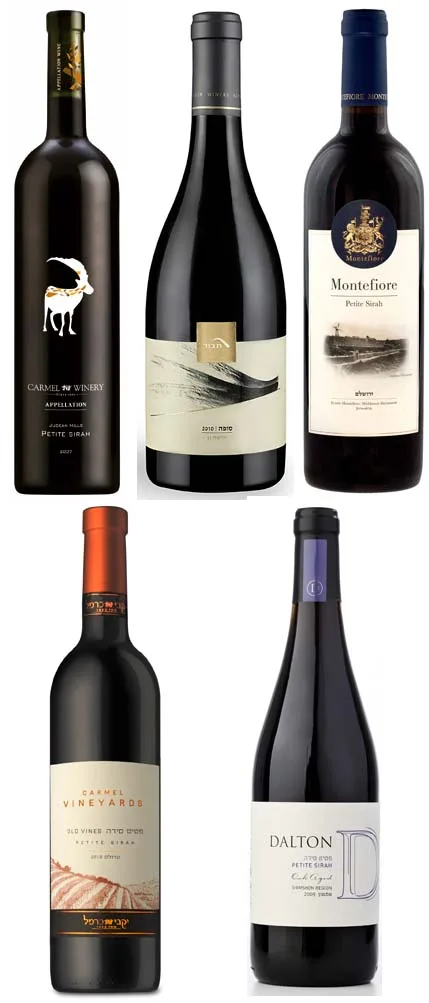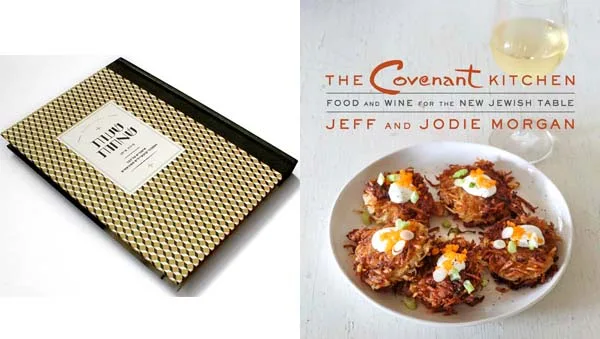Mr. Durif was born in France but never really succeeded there. He changed his name and travelled to far off lands where he achieved great success in the eyes of a small number of followers, but mass appeal and fame still eluded him. He never had the popularity of Mr. Cabernet or Mrs. Chardonnay. Also his new name provided constant confusion with his more famous parent Mr. Syrah.
Of course, I am referring to the Durif grape variety, created in the late 19th century by French botanist Francois Durif. In his nursery he had plantings of Peloursin and Syrah, and hey presto, one thing met another, and a new grape variety called Durif was born.
The Durif never took off in its homeland in the South of France, but when it became known as Petite Sirah, (it is sometimes spelt Petite Syrah) and was planted in California and Australia, the wines it made did gain a following amongst the wine anoraks and people who appreciated its qualities.
Despite its name, until the late 1990’s, Petite Sirah was thought to have nothing to do with the more noble variety, Syrah. However in 1997 its parents were finally identified by the University of California.
As it started life in Mediterranean France, it is no surprise that this variety is extremely well suited to Israel’s Eastern Mediterranean climate.
The Petite Sirah grape variety was a new immigrant to Israel in the 1970’s. It was brought over here purely to provide color, structure and body to inexpensive blends. That is exactly the role it played for nearly thirty years. Few people were even aware they were drinking it.
Incidentally the other varieties bought over at exactly the same time were Emerald Riesling and French Colombard! They all came on the same boat, brought over by the legendary French born Director of the Israel Wine Institute, Charles Loinger, who is in his 95th year. Emerald Riesling became for a time the largest selling wine in Israel producing semi dry white wines and Colombard became the main blending white variety (like Carignan amongst the reds.) Interestingly both are now in decline at the time when the renaissance of Petite Sirah is well under way.
The change in Petite Sirah’s fortunes began when winery owner Yair Margalit decided to use 15% Petite Sirah in his rare, strictly allocated Special Reserve. He insisted that this addition, to 85% Cabernet Sauvignon, was what made the wine ‘special.’ His was the first quality boutique winery in the country and his special reserve was arguably Israel’s first cult wine. It was the first time the wine intelligentsia in Israel took notice of Petite Sirah.
Then two boutique wineries began to make Petite Sirah varietal wines in the early 2000’s. They were the Sea Horse Winery at Bar Giora in the Judean Hills and Vitkin Winery, situated at Kfar Vitkin in the Sharon Plain. Both wineries decided to specialize in more unusual, less fashionable varieties. The respective winemakers Zeev Dunie and Assaf Paz saw the potential and understood the special affinity Petite Sirah had with the Israel climate. They were the pioneers.
The larger wineries which took the Petite Sirah idea on board were Carmel and Recanati. They decided to rejuvenate the variety.
A large proportion of the Petite Sirah vineyards in the country were Carmel’s, but it had previously been used for entry level blends. However they chose a 40 year old vineyard in the Judean Hills, with thick trunked, low bush vines, almost on the ground and drastically reduced yields. The results were that the unfashionable Petite Sirah was found to produce wonderful wines, which were totally original.
Recanati Winery has become a flagbearer for Mediterranean style wines, and they initially introduced their Petite Sirah blended with a little Zinfandel. Now they continue with a varietal Petite Sirah under their Reserve label.
Petite Sirah produces very dark, inky wines, with concentrated black fruit and a tantalizing whiff of violets, with a backdrop of black pepper. Can you imagine a big dark wine with the most delicate flowery aroma The wines are tannic, with a plummy, meaty, earthy flavor. They are usually full bodied and suitable for the largest steak or a selection of grilled meats. Petite Sirah is a wine for carnivores. You won’t get an elegant wine, which is refreshing with good acidity from this variety, but you will get a real mouthful of wine with more flavor, added complexity and the true taste of Israel.
Israeli Petite Sirahs have received international recognition. The Appellation Petite Sirah was awarded four stars in Decanter Magazine and was also made Wine of The Month in the same magazine.
The Recanati Petite Sirah was listed by Berry Bros. of London, maybe the most famous and certainly the most historic wine shop in the world. A massive compliment.
The Carmel Vineyards Petite Sirah was selected by Mark Squires and Robert Parker’s Wine Advocate as ‘The Best of Israel in 2014.’ Furthermore it was selected in the Best Value category.
The Dalton Petite Sirah scored 93 points in the Wine Enthusiast Magazine, equaling the highest score for an Israeli wine.
If we are talking about the grape variety Israel may become known for, both Carignan and Petite Sirah are often mentioned in the same breath. Both had a pretty poor image for a long time, but winemakers have learnt to make quality wines from these traditional varieties by being very selective, working where possible with older vines and reducing yields dramatically at harvest.
Certainly the Carignan grape variety is more part of the Israeli story having been here from the beginning. However Petite Sirah really grows well here and the best wines are outstanding. It is perfect for our climate and produces wines of great power, depth and complexity.
Wine connoisseurs are more interested in tasting an old vine Petite Sirah, rather than yet another Cabernet Sauvignon or Merlot. If Israel is looking for regional identity, then Petite Sirah is a wine that is reasonably unique, and the wines produced are original with strong regional character.
The finest Petite Sirahs in Israel are the Carmel Vineyards Petite Sirah, Dalton Petite Sirah, Recanati Reserve Petite Sirah, Montefiore Petite Sirah and Vitkin Petite Sirah. Any of these are great examples if you are looking to sample a Petite Sirah wine for the first time.
Petite Sirah remains a superb blending grape, which over the years has been its primary use. The best blends incorporating Petite Sirah are the Shilo Legend Red, a blend of Petite Sirah, Petit Verdot and Shiraz. This wine also achieved the score of 93 points in the Wine Enthusiast.
Also the Tabor Sufa, (Storm), produced by Tabor Winery, is a blend of Cabernet Sauvignon and Petite Sirah with great complexity and a long flavorful finish . Furthermore the Sea Horse Winery uses Petite Sirah in a number of its creative, unusual blends, which are always full of character and individuality.
In California, Petite Sirah has gained a loyal following. It even has its own marketing advocacy group, ‘PS I Love You’, created to promote, educate and share information with other lovers. Petite Sirah is also appreciated in Australia and Mexico, but I believe the expressions of this variety here are particularly interesting.
So next time you meet Mr. Durif, give him a chance. Try something different and sample a true expression of the Israeli climate, earth and terroir. The effect on your palate will not be as small as his pseudonym would imply.





